Welcome to my blog, where I explore the fascinating world of temple architecture and take you on a journey to discover the hidden gems of India. Today, we will be exploring the stunning Jalakanteswara Temple Vellore, located in Tamil Nadu, India.
This magnificent temple complex, dedicated to Lord Shiva, is a prime example of the intricate and elaborate Dravidian style of temple architecture. The temple is renowned for its stunning gopuram (entrance tower), which stands at an impressive height of 135 feet and is adorned with intricate carvings and sculptures depicting scenes from Sanatana scriptures like Ramayan, Mahabharat and many more..
As I visited this stunning temple, I was mesmerized by the elaborate details and exquisite craftsmanship on display throughout the complex. The intricate carvings on the pillars and walls of the temple showcase the exceptional skill and creativity of the artisans who built it.
The Jalakandeswarar Temple is also surrounded by a serene and peaceful environment, which adds to its spiritual and meditative atmosphere. It is a site of immense religious and cultural significance for the people of Tamil Nadu and is visited by thousands of devotees every year.
Join me as I delve into the fascinating world of temple architecture and explore the rich cultural heritage of Tamil Nadu. Discover the intricate details and exquisite beauty of the Jalakandeswarar Temple and immerse yourself in the spiritual energy of this magnificent site.
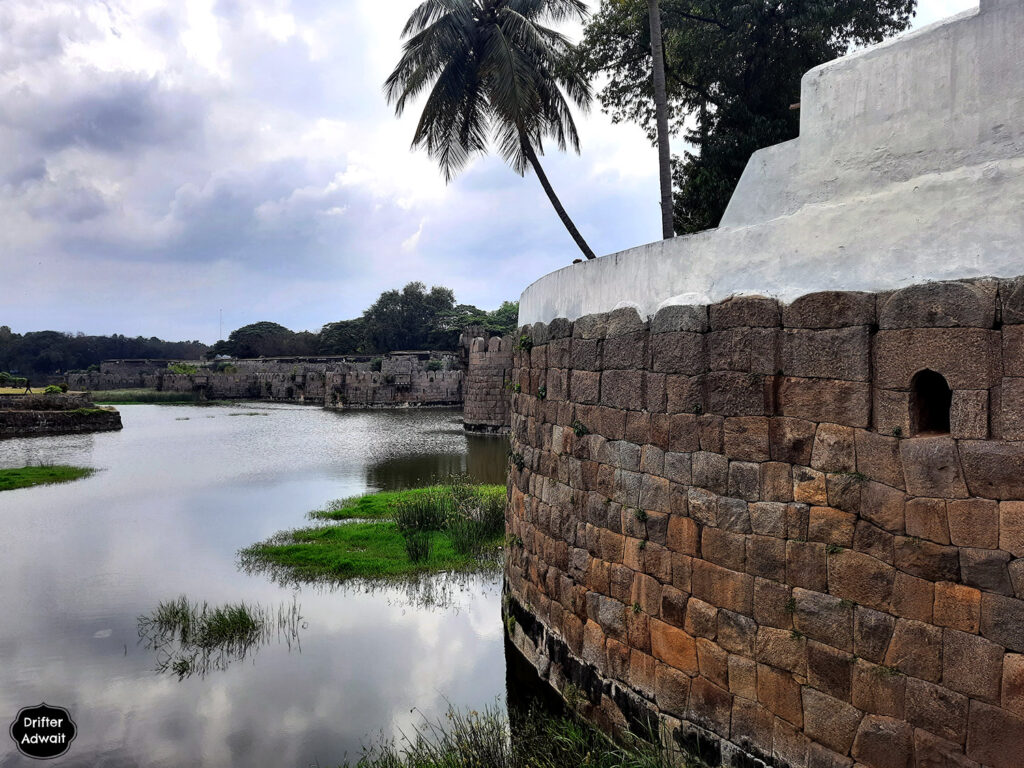
Palar is one of the important rivers in Southern India, flowing from the hills of Yelagiri, meeting the Bay of Bengal at Kalpakkam. The ancient town of Vellore is located on the banks of this river. Vellore has been blessed with a very rich history indeed. Many empires such as Vijaynagara, Bijapur Sultanate, Marathas, Mughals, and British ruled here, playing their parts in history. No wonder, these dynasties impacted Vellore deeply. Each old building standing as of today narrates this history. One of those constructions is the Jalakanteshwara temple Vellore.
1556 AD. It was the toughest time for the Vijaynagara empire. Due to an unrecoverable loss at the battle of Talikota, the Vijaynagara empire has lost its favorite city of Hampi, and now they were forced to retreat deep into their southern territory.
Vijaynagara kings took the help of local Nayakas, or the chieftains ruling the smaller areas of Tamil Nadu, and continued their battle with the green forces. One of those Nayakas was Chinna Bommy Reddy, a subordinate chieftain of Vijaynagara King Sadasiva Raya.
In 1566, just one year after the devastating blow of the Talokota battle, he constructed a brilliant fort of Vellore, surrounded by the deep trenches with thousands of hungry crocodiles lurking around in waters.
The Legend
In the vast area of the fort, in one corner, there was a giant anthill, which was surrounded by stagnant water. Chinna had a dream, where Lord Shiva appeared in front of him and ordered him to build the temple on the location of that giant anthill.
The next day, when Chinna Bommy Nayaka went to the location, he saw a Shiva Lingam right in the middle of that anthill. Immediately, he started building a temple around that anthill, today, we know as Jalakanteshwara.
Jalakanteshwara is a Tamil word, translating as Lord Shiva, standing in the water. Just like that anthill.
Jalakanteshwara Temple Architecture
The temple is located in the northern part of the Vellore fort with a total area of 8786 sq meters. As you cross the fort entrance and take a right turn, you will reach the temple in half a minute. At first, this temple doesn’t seem to be that of the big deal by looking at its Gopuram.
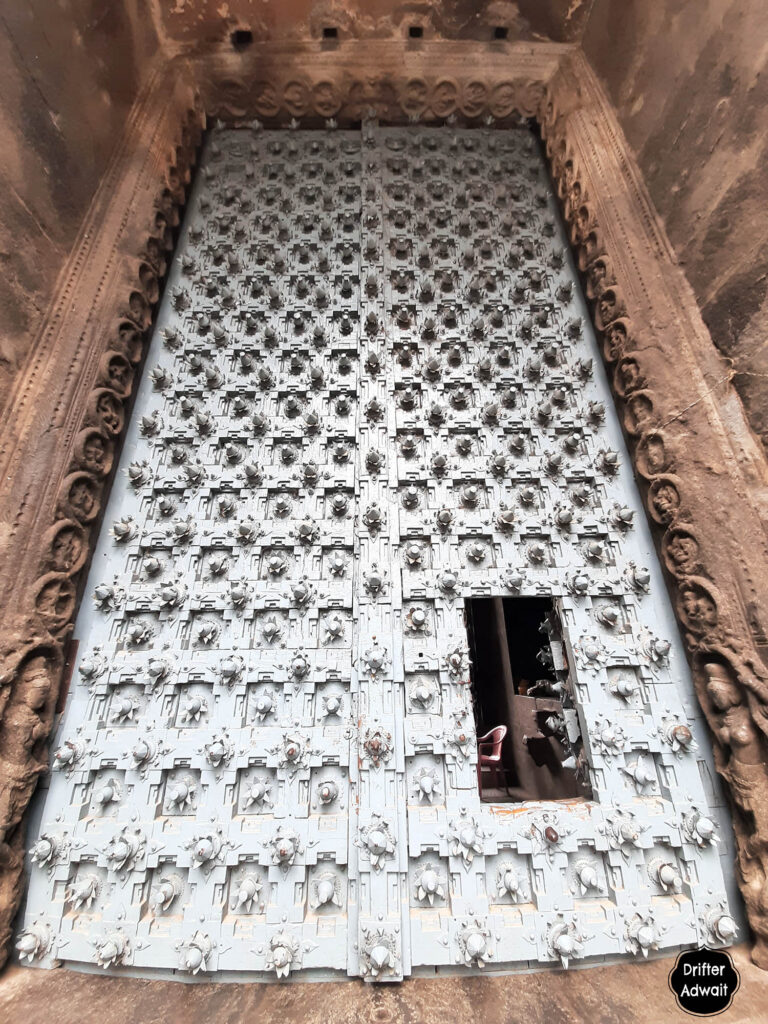
But as you approach its entrance, you realize that the rest of the temple has been hidden in the ground. You have to climb down three meters stairs to reach the entrance of the temple. The original floor level of the fort can be seen here. After that, due to floods and new constructions, the rest of the fort floor was raised three meters higher than the temple.
Entrance Gopuram

Entrance gopuram, which is one of the finest and most intact examples of Vijaynagara architecture is 23 meters in height and 15 meters in width. The first 15 meters are built with granite, and the upper 7 storied portions were built with the help of bricks and mortar.
The giant wooden door, nailed in the cold granite doorframe creates the desired impact, both on the minds of visitors and worshippers. Kirtimukhas, Nandi, Shiva Parvati, and several others can be seen on this entrance Gopuram of Jalakanteshwara.

As you cross the Giant entrance, you find yourself standing in a splendid courtyard, facing yet another Gopuram, to enter into the main shrine. This courtyard surrounds the main shrine of Jalakanteshwara. On the right-hand side, you will find an ancient stonewell, or Pushkarini, quenching the thirst of thousands of devotes, for hundreds of years.

On your left-hand side, you will find the Kalyana Mantapa of Jalakanteshwar temple. Probably, the most beautiful building in the entire city of Vellore. We will come back to this, later.

The second Gopuram is smaller than the entrance Gopuram, but yet, its beauty is not hidden from the devotees. The doorframe is decorated with scenes from epics like Ramayana and Mahabharata. As you cross the second Gopuram, you come face to face with Lord Ganesh, protecting the eastern wall of the main shrine.
There are several sanctum sanctorum that surround the main temple. Small temples, dedicated to Lord Subramanya, Navagraha, Yadnyashala, temple kitchen, and few other buildings surround the Jalakanteshwara temple. You can visit them as you circumvent the temple.
The main shrine of Jalakanteshwara has been divided into three parts. The biggest portion of the building is dedicated to the Shiva Lingam of Mahadev, which has a common hall, connected to the northern side. The western side of that hall or Mantapa is connected to a Nataraja shrine.
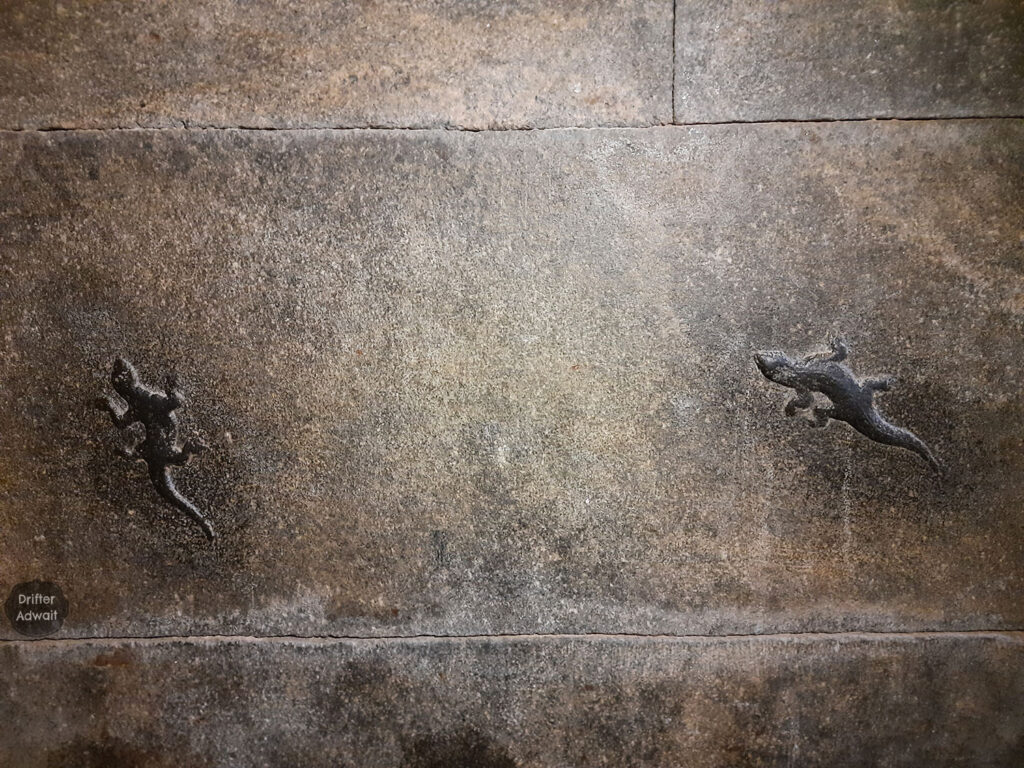
One of the interesting things about the temple is engraved house lizards in the temple walls. People who have been diagnosed with Sarpa Dosha, or the couples who are facing marital issues, or having difficulty being pregnant, donate a silver lizard to the deity. Devotees believe, that doin so will remove the obstacles from their lives.
The front pillars of this hall are decorated with some beautiful carvings from Dashavataras. Currently, the shrine adorned by the Nataraja, initially was the home of Ranganatha, as per some sources, making this temple a temple, visited by both Shaivaites and Vaishanvites.
Kalyana Mantapa of Jalakanteshwara Temple

Even though the temple is built under the patronage of Vijaynagara King, Kalyana Mantapa, the most beautiful building in the Vellore, is the later addition to the temple. It is said, that Nayaka Sadasgivadeva Maharayar added these beautiful sculptures later after the temple was built. Legendary British art historian Percy Brown describes this temple as the Museum by Itself.
The British Thieves
British Museum, London is like Alladin’s cave, in the sense, that most of the precious artifacts, stolen by Britts are kept here, for ‘Preserving and Display’. The India pride project is an organization, which tries to get these invaluable artifacts back from that museum.
Most interesting thing is, this Kalyana Mantapa would easily have been lying there, if Lord Varuna, the Lord of seas would have co-operated with these white pirates. Impressed by the intricate craftsmanship, a Governer of East India Company decided to move this entire building to London.
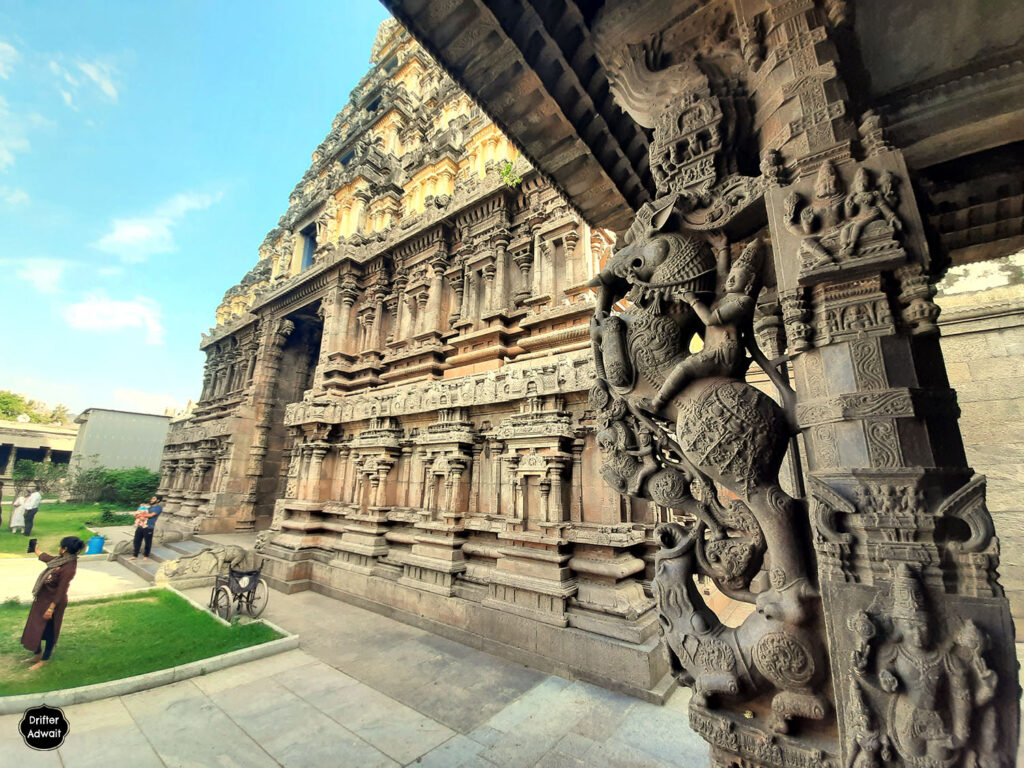
Immediately, the arrangements were made. Parts of the Mantapa were numbered. Detailed drawings and maps were made, and plans were prepared to dismantle every rock from the Mantapa, to be taken to Britain, and later to be rejoined in a museum. A special ship, with all the necessary arrangements to carry these heavy stones, departed from the shores of Britain.
Due to the grace of Lord Varuna, that ship sunken in the rough seas, and the plan was postponed, waiting for another specialized ship. Meanwhile, the political situation in south India deteriorated further, making Britishers nearly impossible to execute the temple robbery, and thus, this beautiful building was saved.
Kurma Platform:
The mandapa is divided into three layers and 46 beautiful pillars. Each layer is almost one meter taller than the other layer. The tallest platform is the most interesting one. It has a smaller Kurma platform, located in the center. It looks like that this platform has been constructed on the back of the giant tortoise. The tortoise is facing east, with his tail and four legs facing other directions. Several elephants and Ashta Digpalas are helping the Kurma to hold this platform stable on his back.
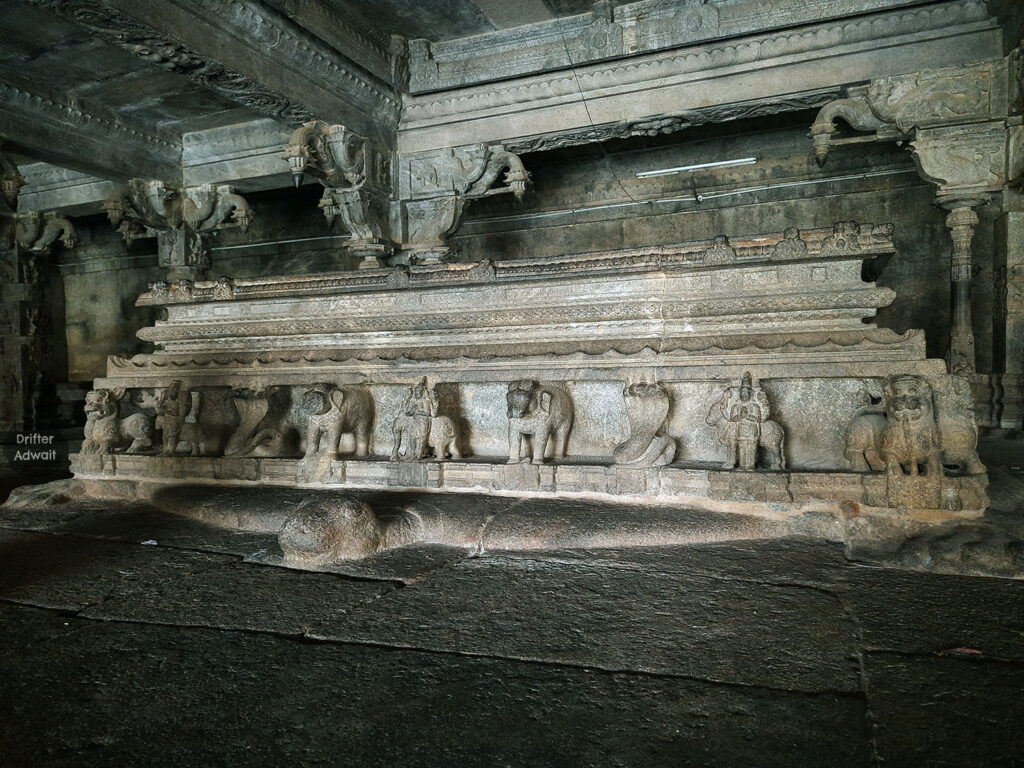
In older times, when the temple used to be buzzed with devotes, the Kurma platform was used to being the center of everyone’s attention, as marriage ceremonies were used to be performed, right on this platform. But, these days, every tourist comes here, not to take a look at the platform, but to experience the pillars on which the roof of the mandapa is held aloft.
Roof of the Kalyana Mantapa
Often, we make ourselves so busy viewing the temple walls, pillars, and Vigrahas, we tend to forget about the roof. This building is not an exception to this rule. It has one of the most intricate flowers Mandalas you will ever see.
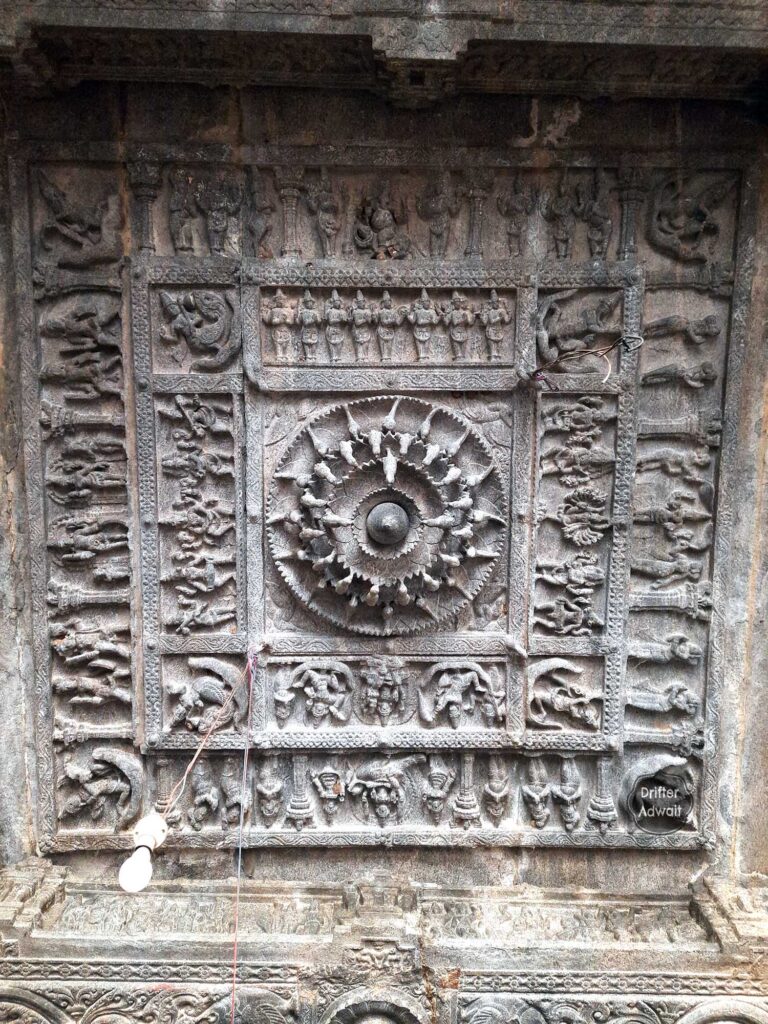

You can see three lines of petals surrounding the lotus center. The unique thing about this lotus is, the sculpture has imagined, that as the lotus is inverted, the water droplets must be falling on the grounds, instead of the water. So, the sculpture has carved two parrots for each petal hanging inverted, drying to drink those droplets.
You can see eleven couples, dancing, and celebrating the life, surrounding the lotus. Circles of dancers have been entrapped in an ornate border. Beyond that border, you can see Ashta Digpalas surrounded by their devotees. Starting clockwise, you can see Lord Yama, on 12 o clock (south) riding a buffalo. Next to him, at 1o’clock, you will see two-headed Agni, riding a ram. Three o clock, you will see Indra, riding on his legendary Airavat. At five o clock, you will see Isana, riding a bull. At six, you will see Kubera, riding a horse, at eight o clock you will see Lord Vayu, riding a Gazelle. Moving forward, at nine o clock, you will see Varuna, riding a Makara, and at eleven o clock, you will see Nirrti, riding a human corpse. These Ashta Digpalas are surrounded by their devotees, saluting, praising their lords, and a few of them, holding a parasol, on their lord’s heads.
Pillars of the Kalyana Mantapa:
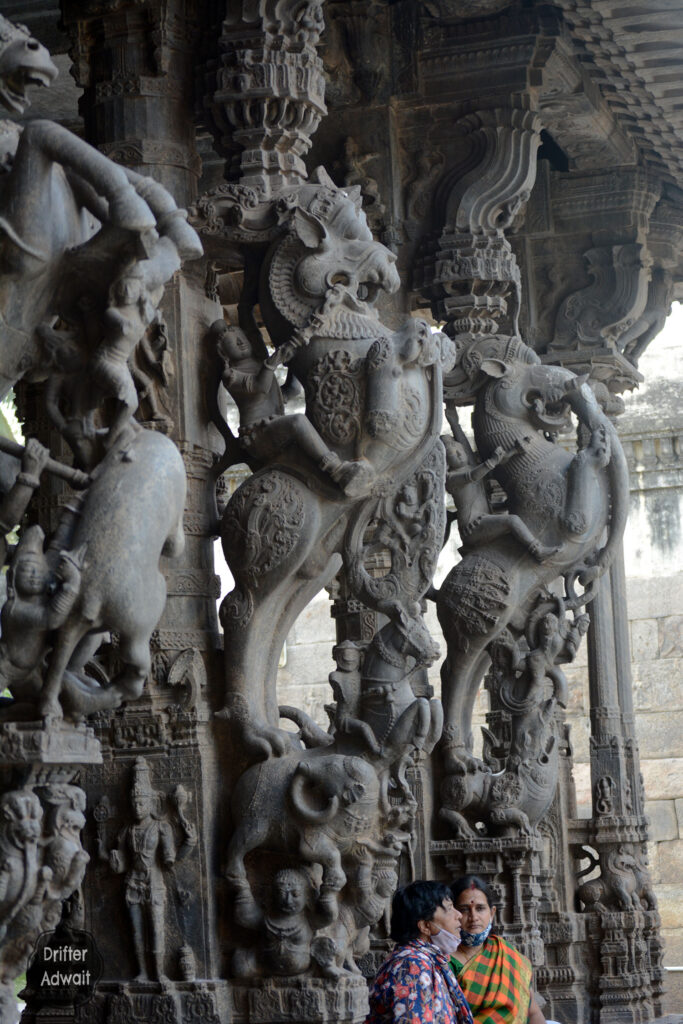
Let’s come to the pillars of the most famous, and most beautiful structure standing in Vellore city, the Kalyana Mantapa of the Jalakanteshwara temple. These are a few of the most intricate, detail-oriented, anatomically proportionate pillars I have ever seen in my life. Among them, being carved out of black soapstone, the outer pillars are more beautiful than the inner granite ones. Their pillars can be categorized into three types, those are, Yali riders, Sharabh riders, and Horse riders.
Sharabha Riders:
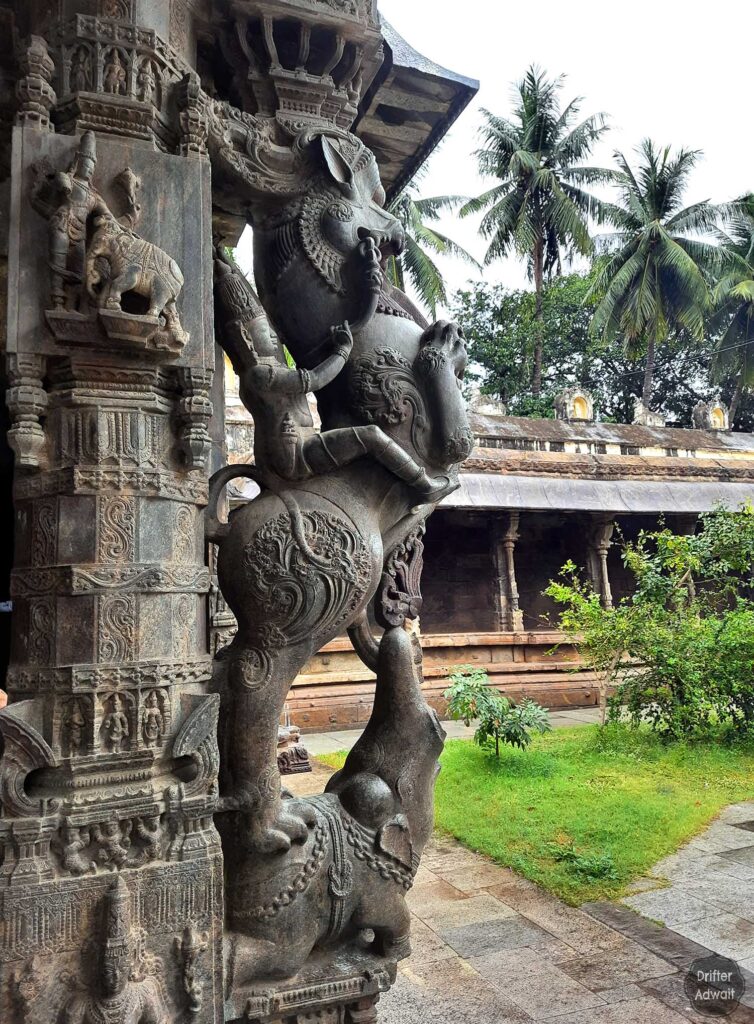
Here, you will see an elephant at the bottom, trying to summon the strength to stand up, because it’s being crushed by the weight of the mythical creature Sharabh. One brave soldier is riding that Sharabh. An elephant represents the powerful dynasties, which are being crushed by the owners of the Sharabh, i.e. the temple building Nayakas.
Sharabh is a combination of lion, horse, deer, elephant, and many other members of the animal kingdom. This aggressive creature is very easily tamed by the rider, which can be seen by his effortless expressions. With the help of the chain, he is controlling that eye protruding sharabh. His sharp dagger-like claws and nail-like teeth coming out of his gums are fearsome.
Yali (Vyal Riders)
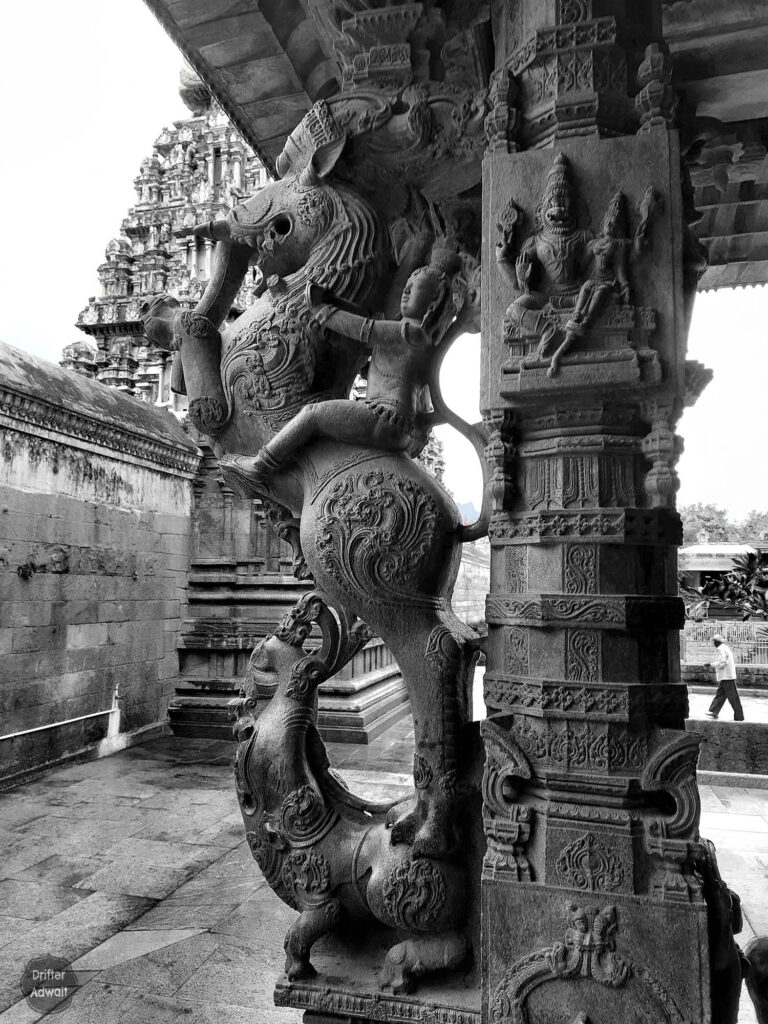
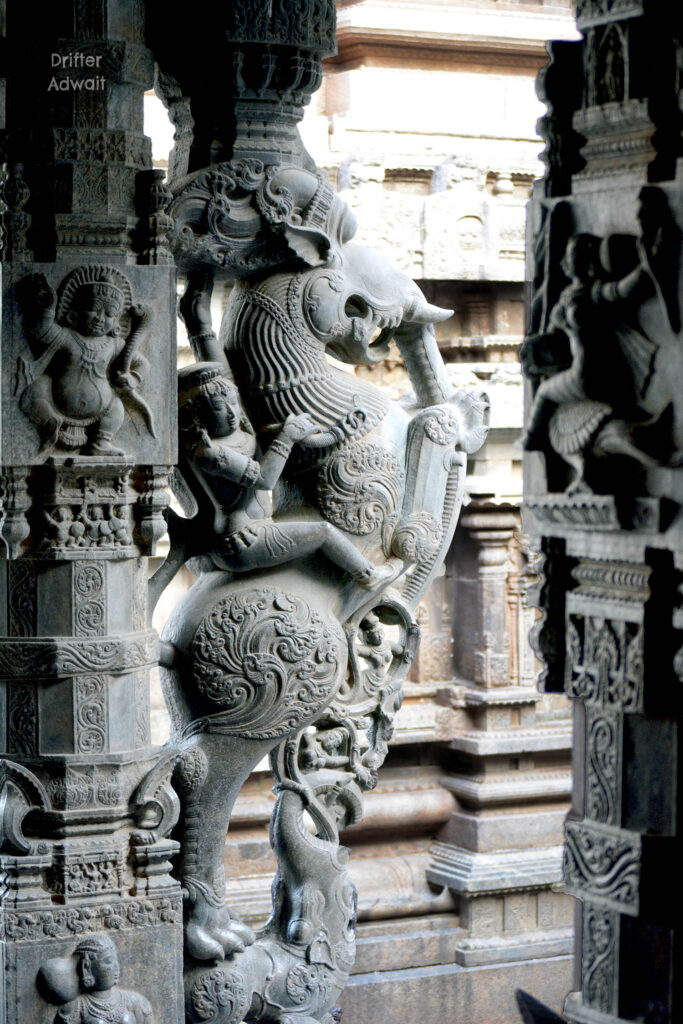
Like Sharabh, even Yalis are mythical creatures, only to be found in religious scriptures. It’s a combination of part lion, part elephant, and part horse. Also known as Vyal, many times, this animal has several faces, made up of several animals such as lion (Sinh Vyal), elephant (Gaja Vyal), horse (Ashwa Vyal), dog (Shvana Vyal), and even a human (Nir Vyal).
On the pillars of Jalakanteshwara temple Vellore, these evil destroying Yalis, and the brave riders are depicted splendidly. Their bravery, a war face expression, bulging eyes, and protruding teeth look like they are about to enter the battlefield, killing everyone who comes in their way.
Leopard Hunting
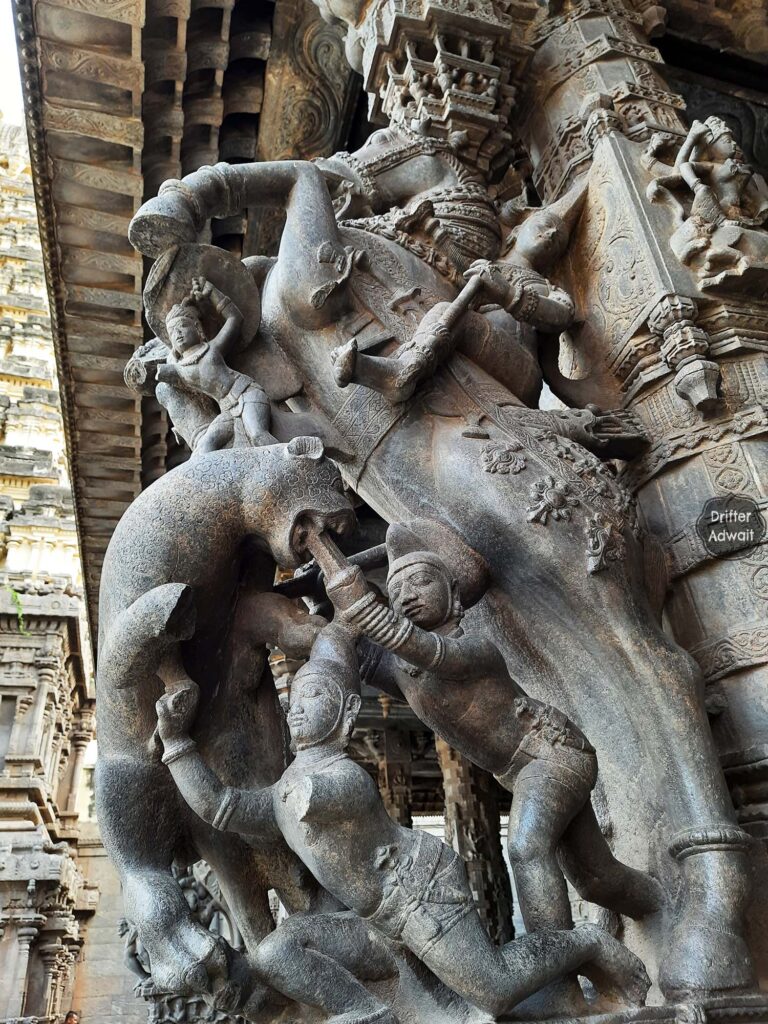
Even though each and every pillar here makes you stop right there, to admire the efforts and imagination that have been applied there by those anonymous sculptures, my favorite pillar was a leopard being hunted.
Perhaps the most dramatic pillar ever carved, this art stuns you in one place. Hunting was one of the most popular sports being played in medieval India, this pillar allows us to sneak a peak in this ancient sport.
Here, a total of six hunters are being engaged by one aggressive beast, struggling for his life. A chieftain, with an interesting helmet or perhaps a crown, is riding a horse. He is holding an ornate spear, trying to stab the leopard.
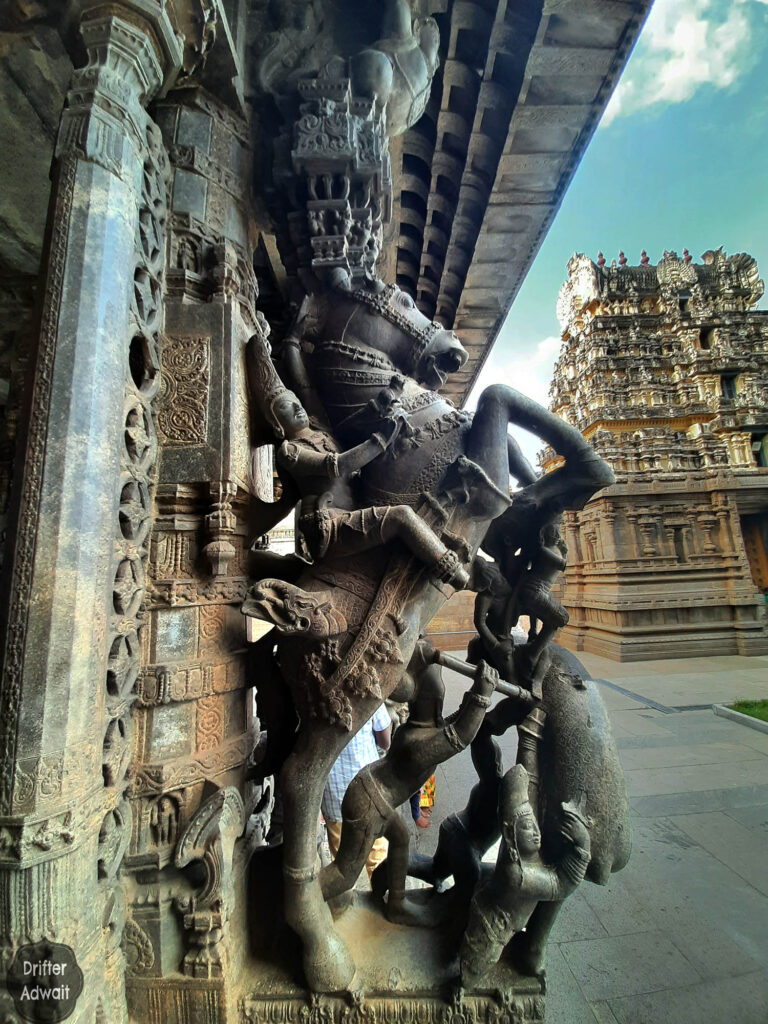
The horse has been jumping on its two legs shows the excitement of the play that has been unfolding under his feet. His eyes are bulging out with his mouth open with his teeth and even his gums are looking lifelike. You almost can imagine a foam coming out of his mouth due to the excessive stress. The horse has been decorated with several ornaments.
You can see the rider, with a small mustache has several daggers, quivers filled with bow and arrow, and a couple of swords on his horse. You can see his helpers under the front feet of the horse, holding their shields over their head, saving themselves from the two front legs of the horse. You can see his three other helpers wrestling with the beast.
One man, with a small sword in his hand has managed to stab the leopard in its mouth. In his right hand, he is stabbing the poor beast with the spear. There is another man, kneeling in front of him, who has stabbed the animal into the lower stomach. On the right side of the rider, you can see one warrior, who has stabbed the leopard in its back, and you can see the pointy end of his sword is exiting out from the other end. As that warrior has a strong grip, he is being dragged with the strong leopard.
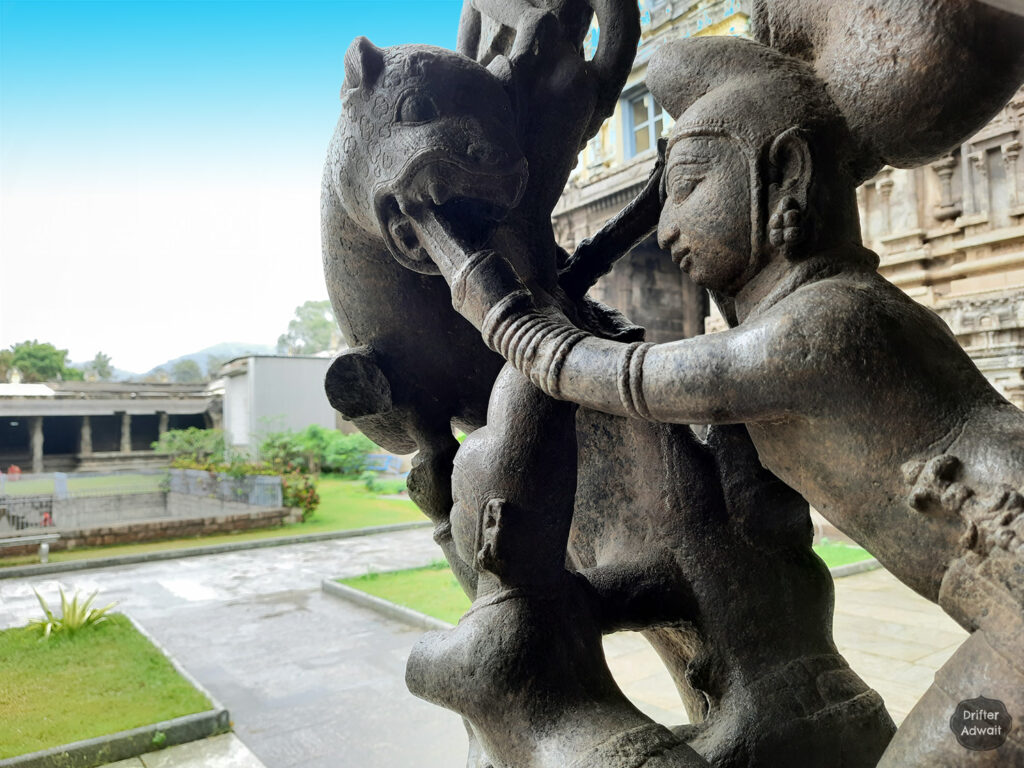
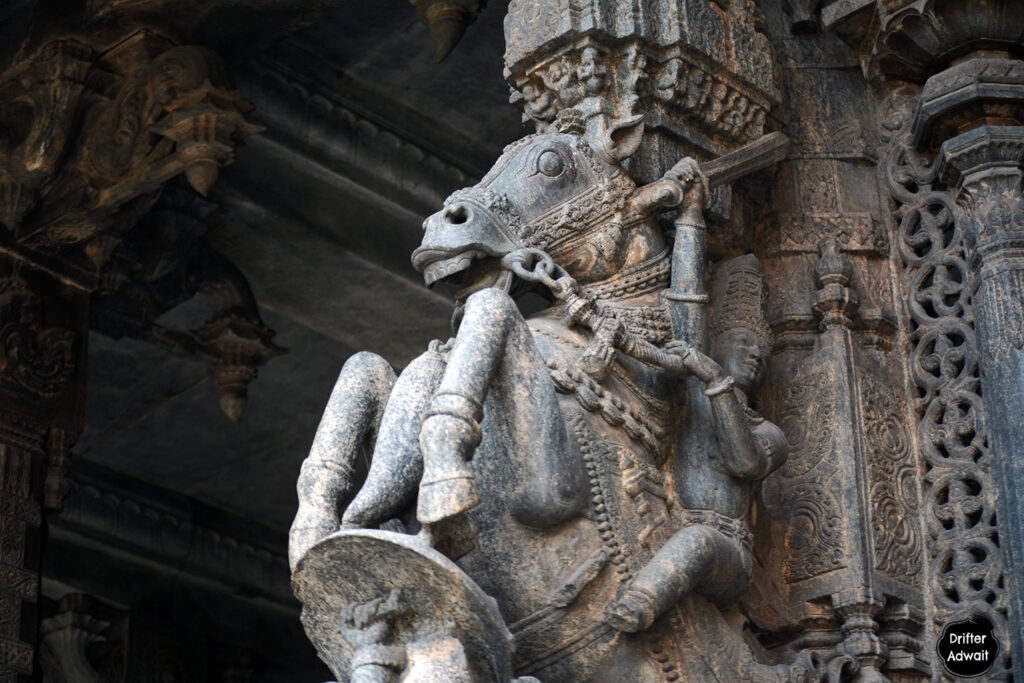
The leopard is clearly the center of attention here. Bulging eyes, fangs protruding out of the gums, and visible rosettes. He is giving a tough fight, even to the six fierce warriors with weapons. While fighting with these warriors, he has pressed a hunting dog under one of his hind legs. What a masterpiece indeed!!!
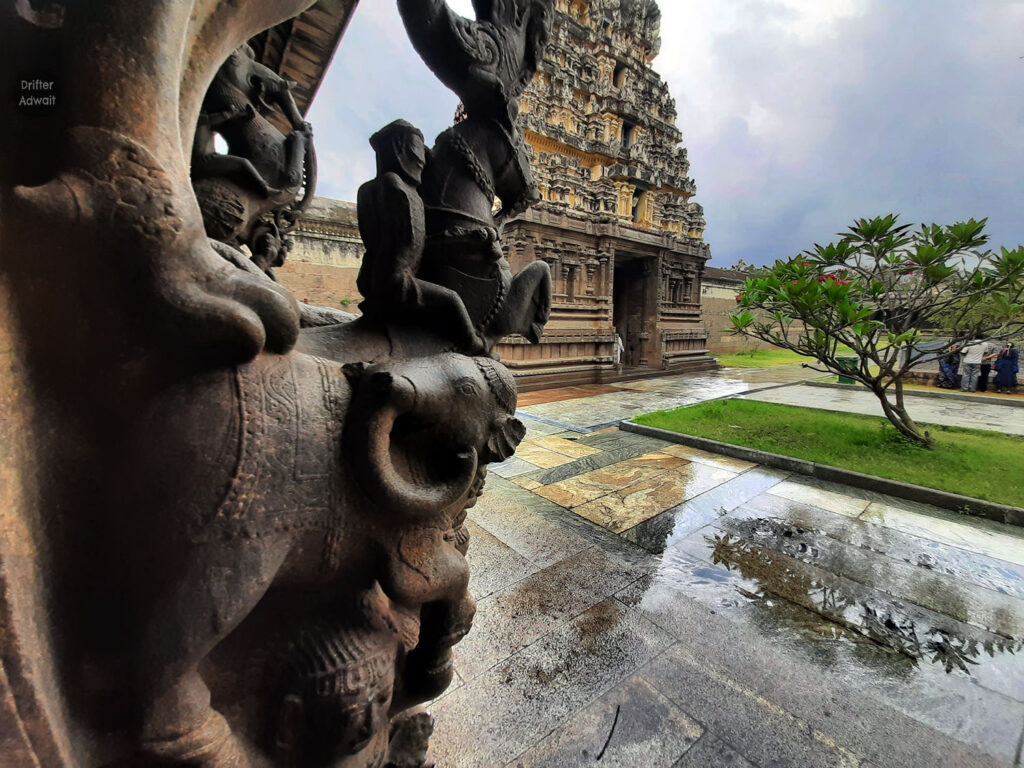

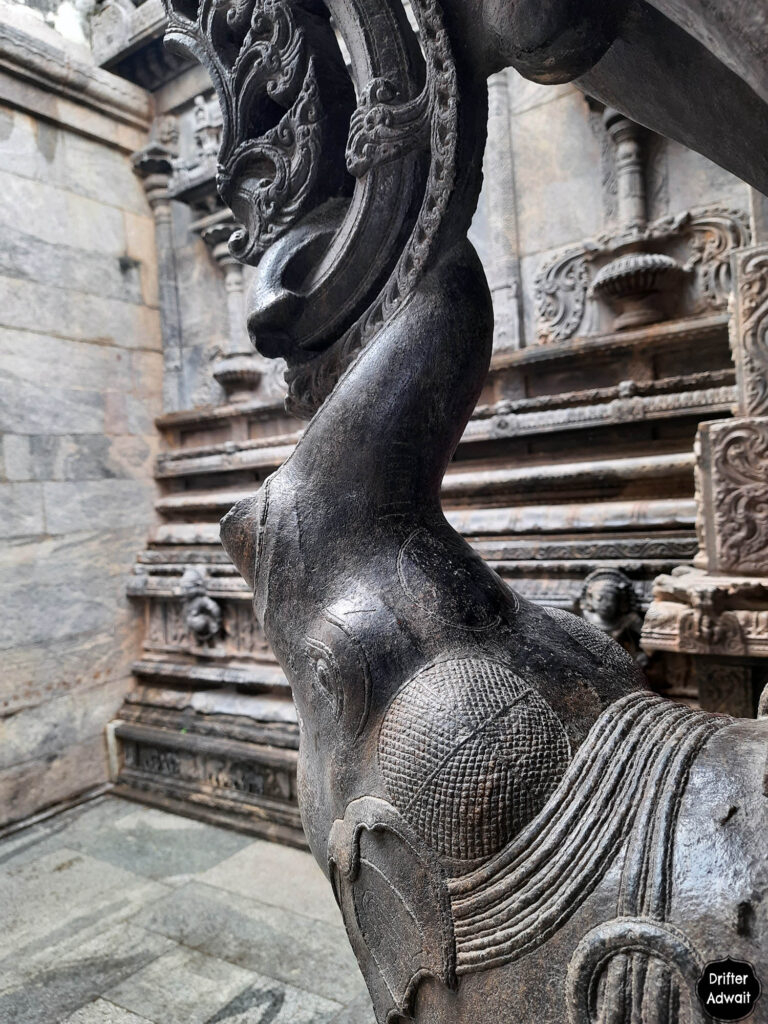
As the ownership of the Vellore fort kept on changing, after the Vijayanagara empire, darkness gathered inside the fort and in the sanctum sanctorum of the temple as well. When the power was transferred to the Bijapur sultanate, Shiva lingam was removed and kept hidden in a nearby village named Sathuvachari. Almost for 200 years, the temple was without its owner. From the Bijapur sultanate to the British raj, the temple was being used as a military garrison. During Muslim rule, most of the idols were either desecrated or thrown away in the trench.

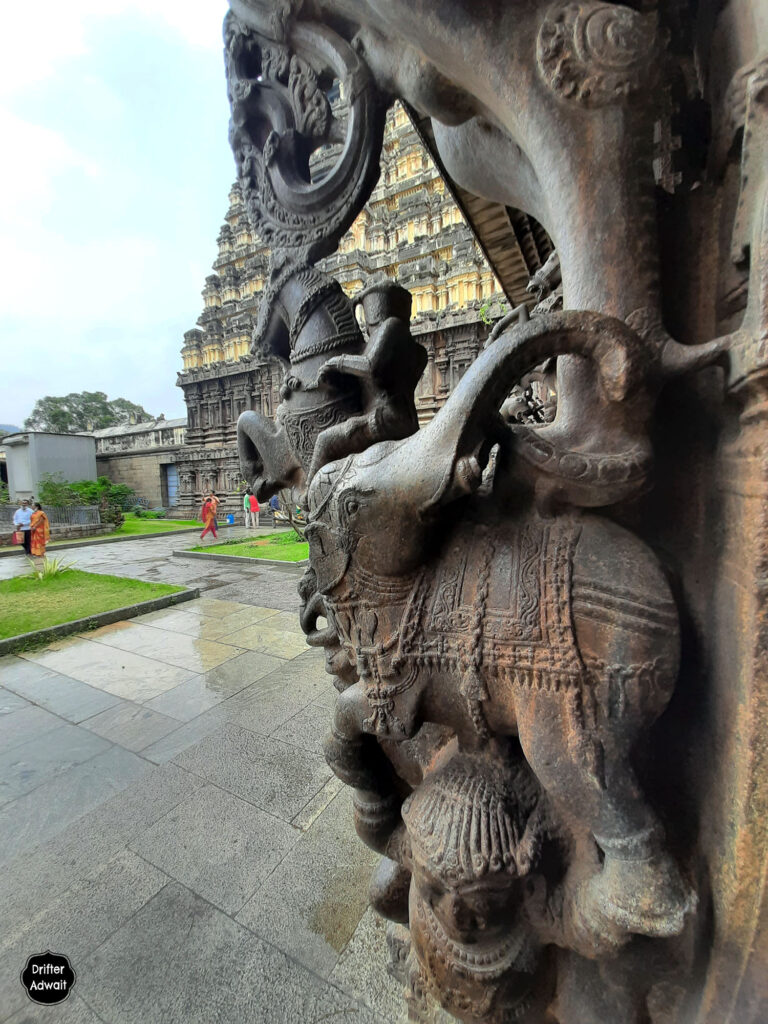
After independence, several attempts were made in the court of law, or by the people to keep the original Vigraha in the santorum, but being a secular state, all those attempts failed. In 1981, tired of waiting and running out of patience, people decided, that the Vanavasa of their beloved Mahadev is over. By taking over the temple, they established the Vigraha with consecration. And since then, devotees are praying, chanting, and meditating in the premice.
How to reach Jalakanteshwara Temple: ?️
✈️The nearest airport is Chennai, which is 2hr drive away from Vellore.
?Vellore is well connected by train, being one of the major railway stations in Tamil Nadu. Trains from all over the country arrive here every week.
?Vellore is about 220 km away from Bangalore and 143 km away from Chennai, well connected with super smooth highways.
?️Places to stay in Vellore:
A wide range of hotels are available in Vellore, which can be booked online. Being in the heart of the city, Vellore fort and Jalakanteshwar temple are surrounded by plenty of hotels.
?Reference:
Vellore Fort and the temple through the ages, A.K.Sheshadri, Sri Jalakanteswarar Dharma Sthanam, 2006.

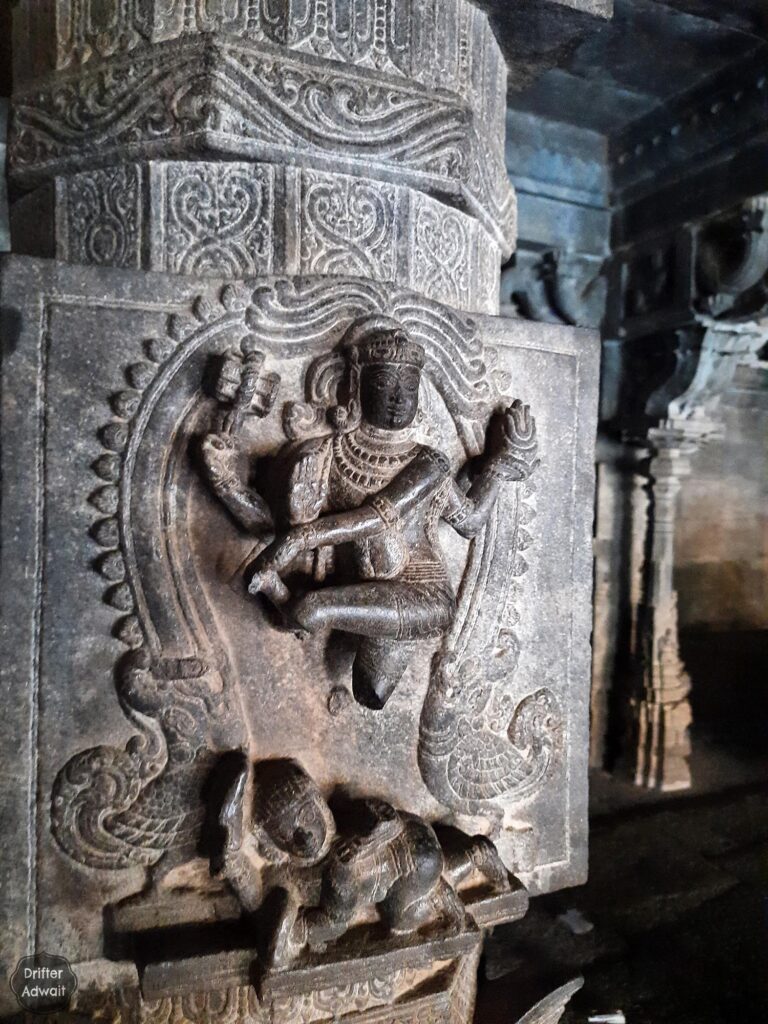


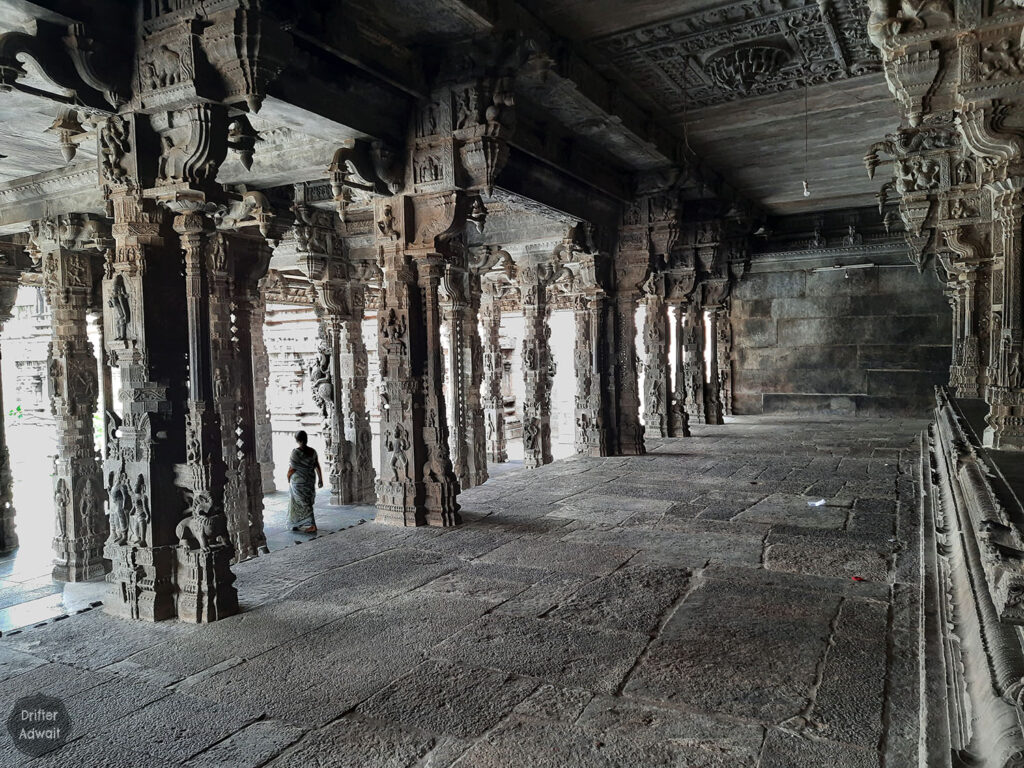
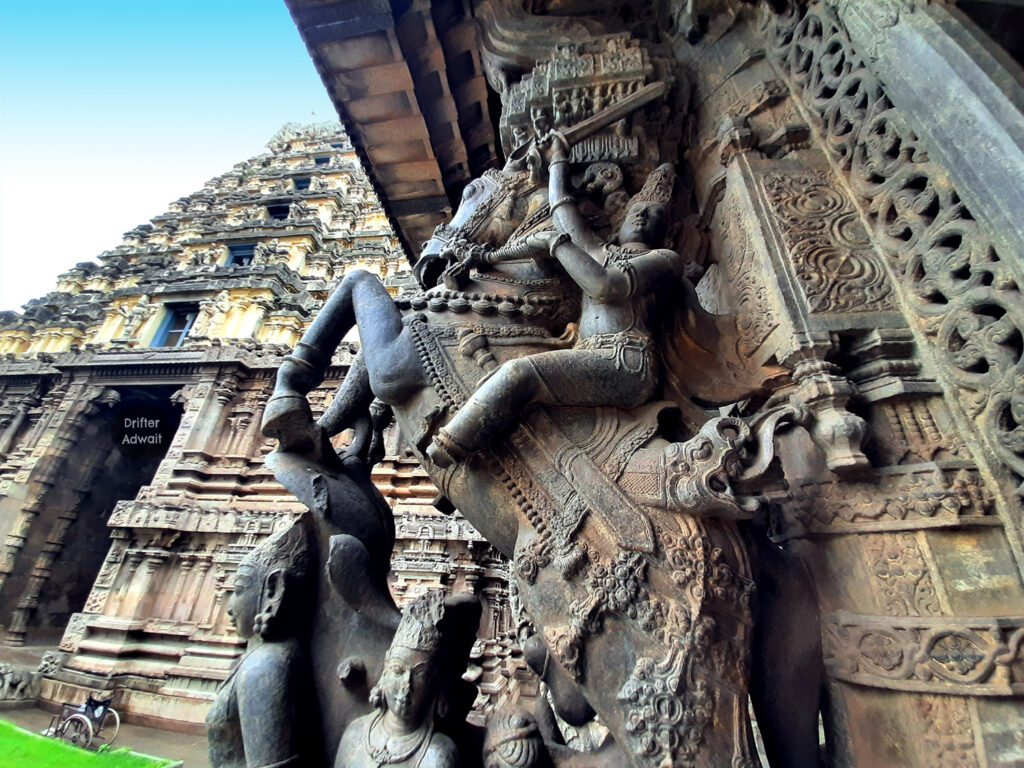
Old Photos of Jalakanteswara Temple Vellore
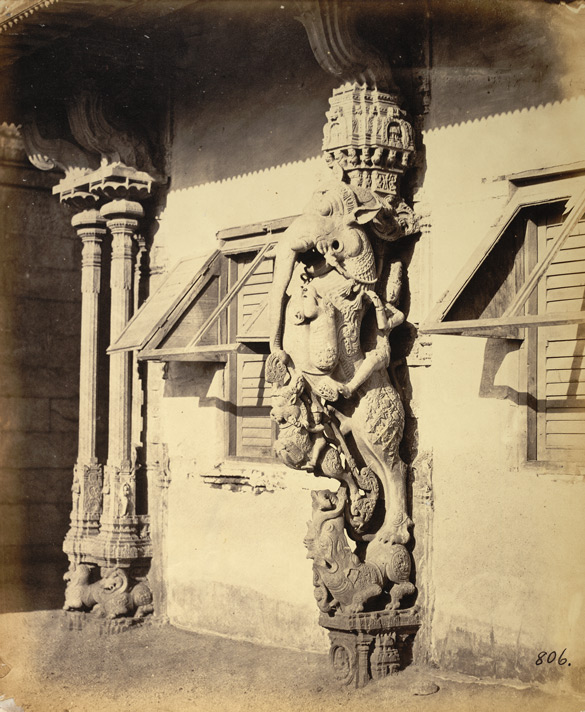


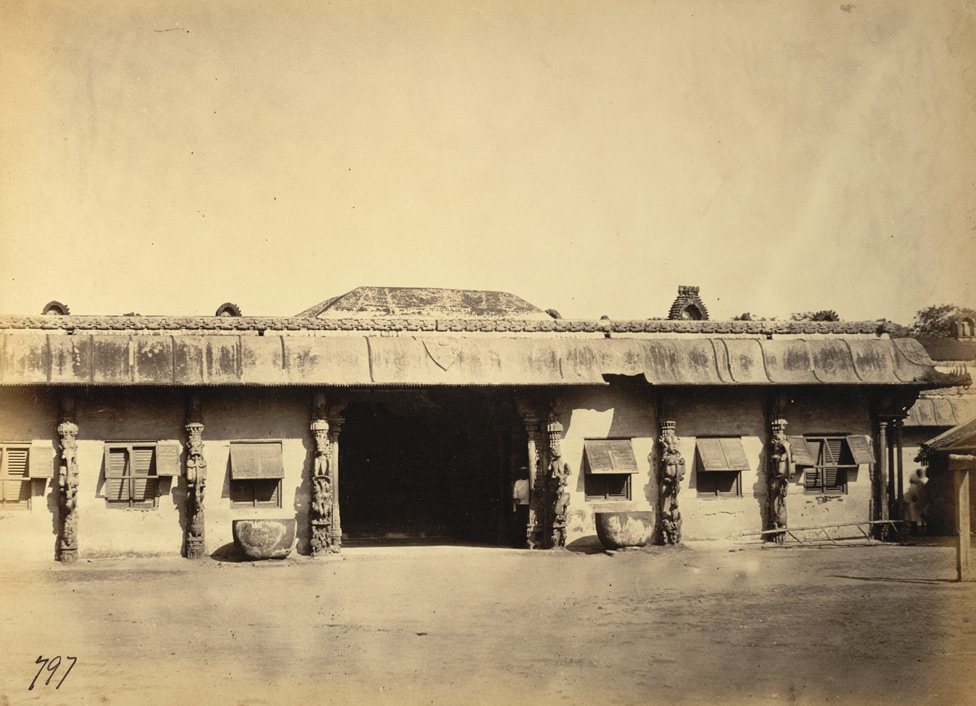

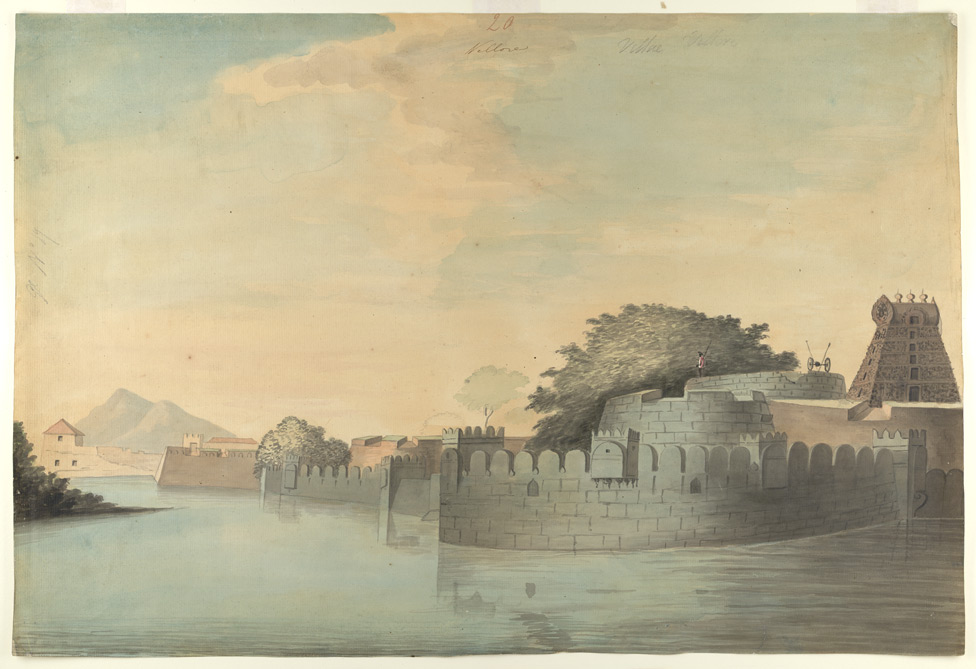
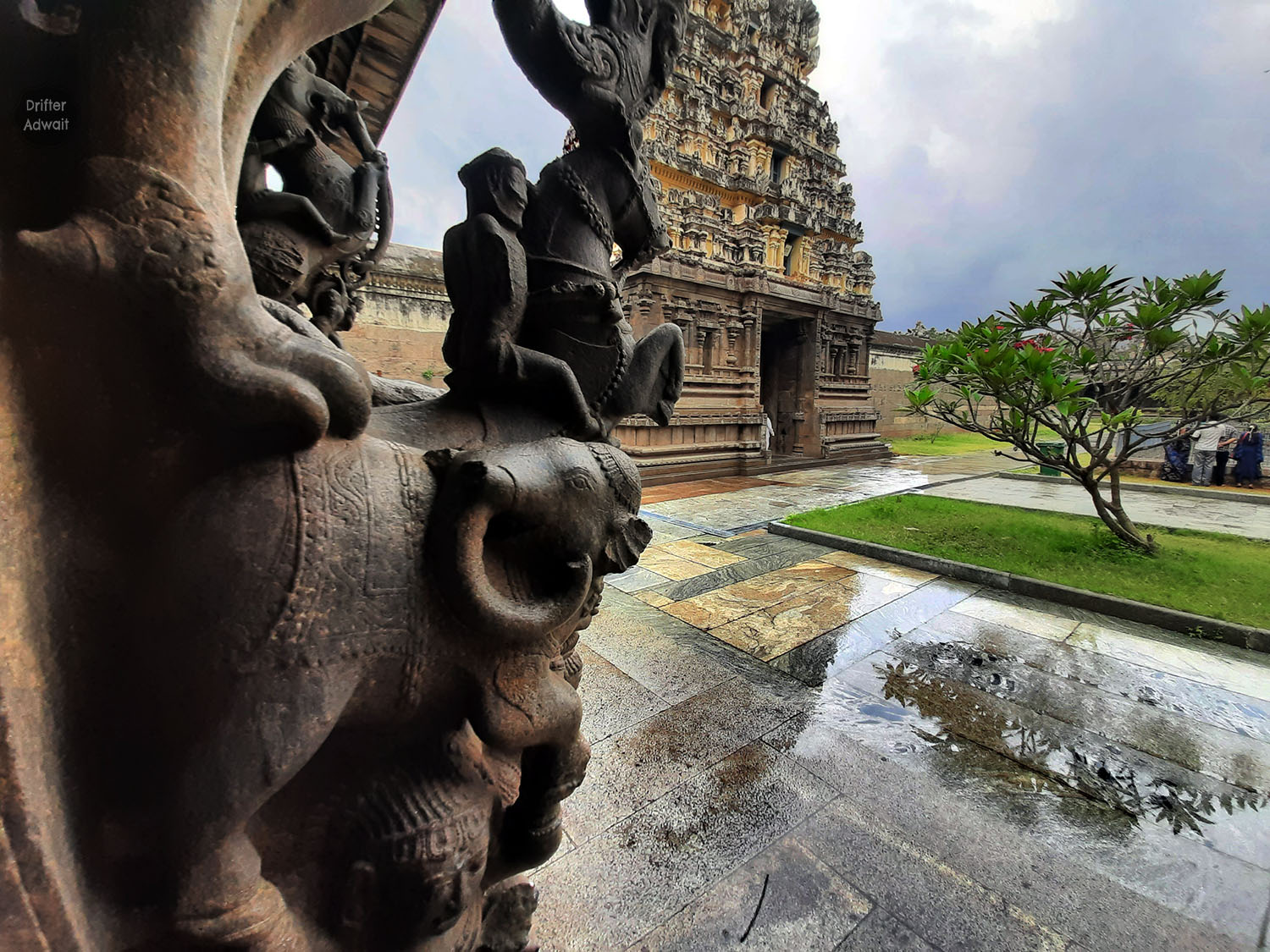



khup sunder kalakusari ahe
Yes indeed, it’s a beautifully carved temple.
Thank you for taking the time to read and engage with my travel blog. Happy travels, and I hope you continue to enjoy the adventures shared on the platform!
अप्रतिम!व्वा छायाचित्रात एवढे सुंदर दिसते तर प्रत्यक्षाची कल्पना ही करवत नाही. म्हणे भारतात सुई बनत नव्हती. तर मग हि शिल्पे काय यांचा बाप मुगल बनवुन गेला की इंग्रज. ह्या कारागिरीला मानाचा मुजरा!!
अतिशय सुंदर मंदिरे आहेत आपल्याकडे. भटकंतीसाठी बाहेर पडले की तुम्ही म्हणता तसे आपल्याला आत्तापर्यंत जे सांगितले गेले अश्या गोष्टी किती खऱ्या खोट्या होत्या हे समजायला लागते, आणि उघड होतो आपला खरा दैदिप्यमान इतिहास. तुम्हाला संधी मिळाली तर हे मंदिर जरूर पहा. ब्लॉग वाचल्याबद्दल आभारी आहे तुमचा वाल्मिक जी.
धन्यवाद, सर , अतिशय महत्वपूर्ण माहीती , अत्यंत सुंदर कलाकृतीची माहीती दिल्याबाबद. आपणामुळे मंदिराची माहीती मिळाली .
पुनःच आभार
नमस्कार अशोक जी, ब्लॉग ला भेट दिल्याबद्दल आभारी आहे. अत्यंत सुंदर आहे हे मंदिर, तुम्हाला संधी मिळाल्यास अवष्य भेट द्या. हा आपल्या सर्वांचा वारसा आहे.
खूपच सुंदर शिल्पे असलेलें वास्तुशिल्प आहे. मद्रास सरकार तसे हिंदूद्वेष्टेच फक्त मंदिराचे पैसे लुबाडून इतर धर्मियांना वाटप करते!
शंभर टक्के सहमत. त्यामुळेच आपली देवळे सरकारच्या ताब्यातून मुक्त होणे परम आवश्यक आहे.
Great Such a great historical information and photos .
Thank you sir. Must see placein Vellore.
वा फारच सुंदर शिल्प आहे। अशिच कलाकृती पाहण्यासाठी महाराष्ट्र राज्यातील परभणी जिल्ह्यातील गंगाखेड तालुक्यातील धारासुर या गावी शिवालय “गुप्तेश्वर” देवस्थान आहे। फेसबुक किंवा युट्युब वर आपणास मंदिराचे फोटो व्हिडिओ पाहवयास मिळतील। आपल्या देशात अश्या सांस्कृतिक वारस्याची काहीच कमी नाही फक्त माहिती नाही एवढेच दुःख…..!
धन्यवाद प्रतीक जी. आपला वारसा म्हणजे आपली जवाबदारी. आपणच लोकांना माहिती करून द्यायची त्यांची. धारासूर मधील गुप्तेश्वर हे ठिकाण मला माहिती न्हवते. माहिती करून दिल्याबद्दल खूप धन्यवाद.
प्राणिल आचरेकर . १९/०४/२०२१
हे एकदम उत्तमच आहे ! जागतिक वारसा दिवसाच्या निमित्ताने हे पाहण्यात व वाचनात आले आणि आपल्या हिंदुस्थानातील संस्कृतीचा एक अद्भुत करिष्मा बघता आला ! मी याचा प्रसार नक्कीच करेन ! अशा प्रकारच्या संस्कृतीचा प्रसार करण्याची खरी गरज आहे !
धन्यवाद !
धन्यवाद सर. तुमच्या सारख्या लोकांमुळेच आपली वारसा स्थळे अजून टिकून आहेत. खूप खूप धन्यवाद.
Excellent write up and pictures. Please keep up this venture of talking about our heritage. Much needed in today’s times.
It’s our duty to take these marvelous places on the world map. Thank you so much for the kind comment Vihang.